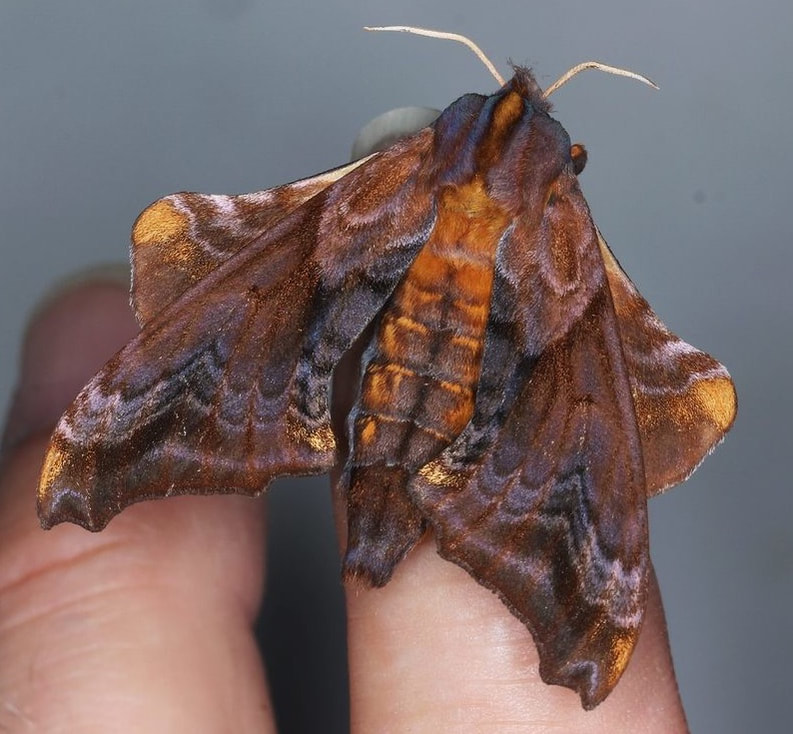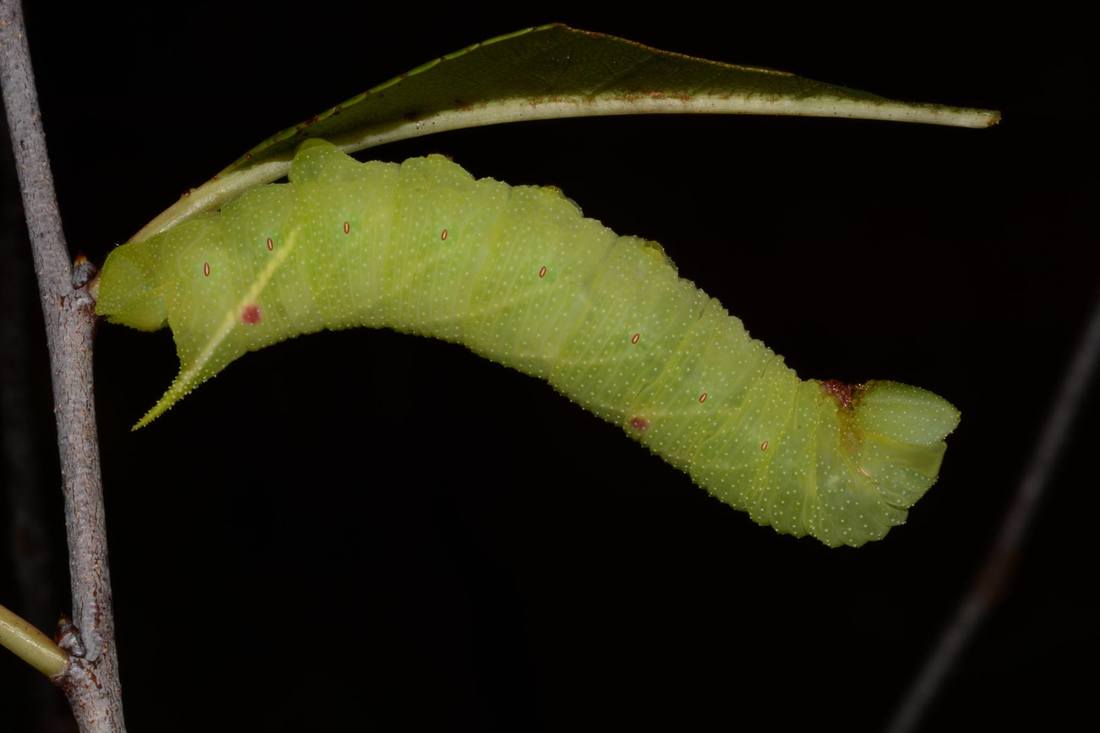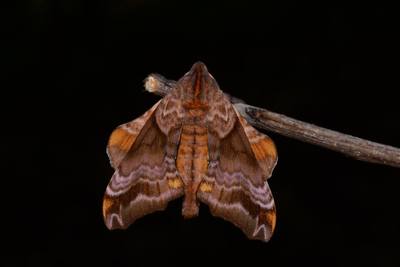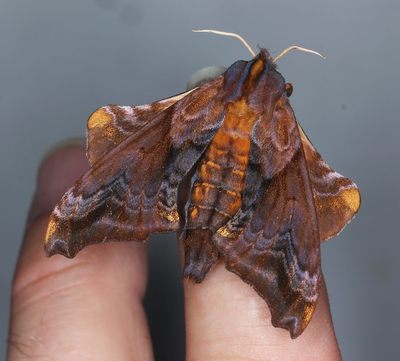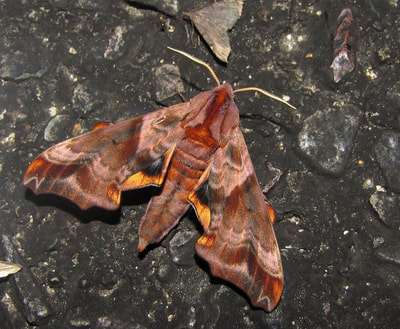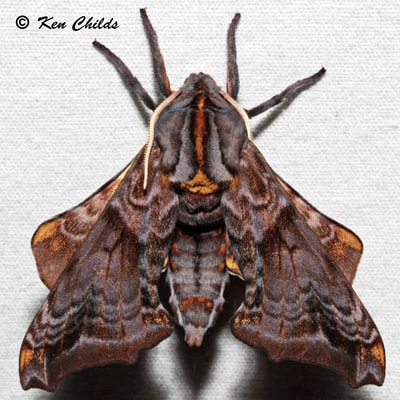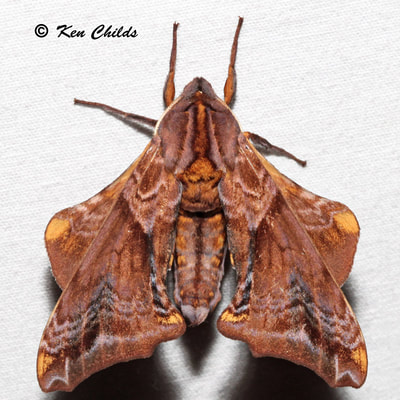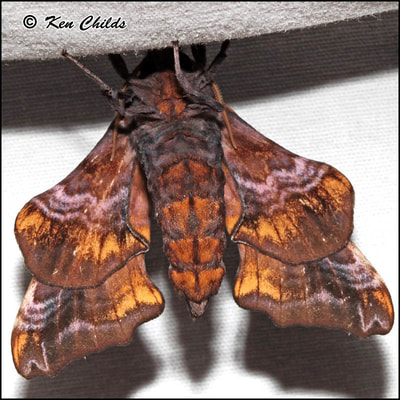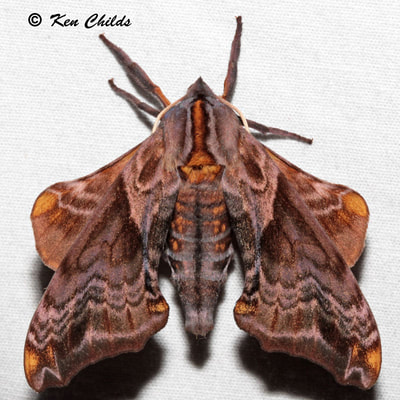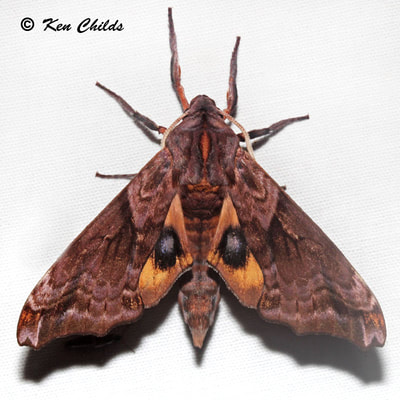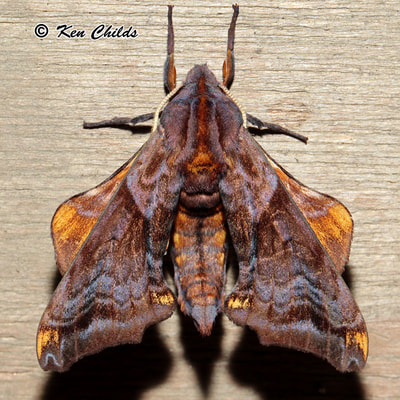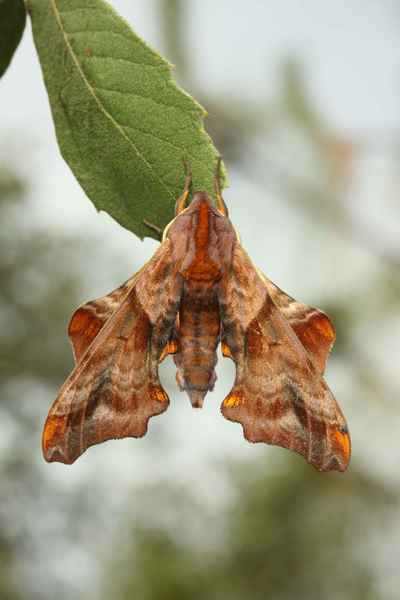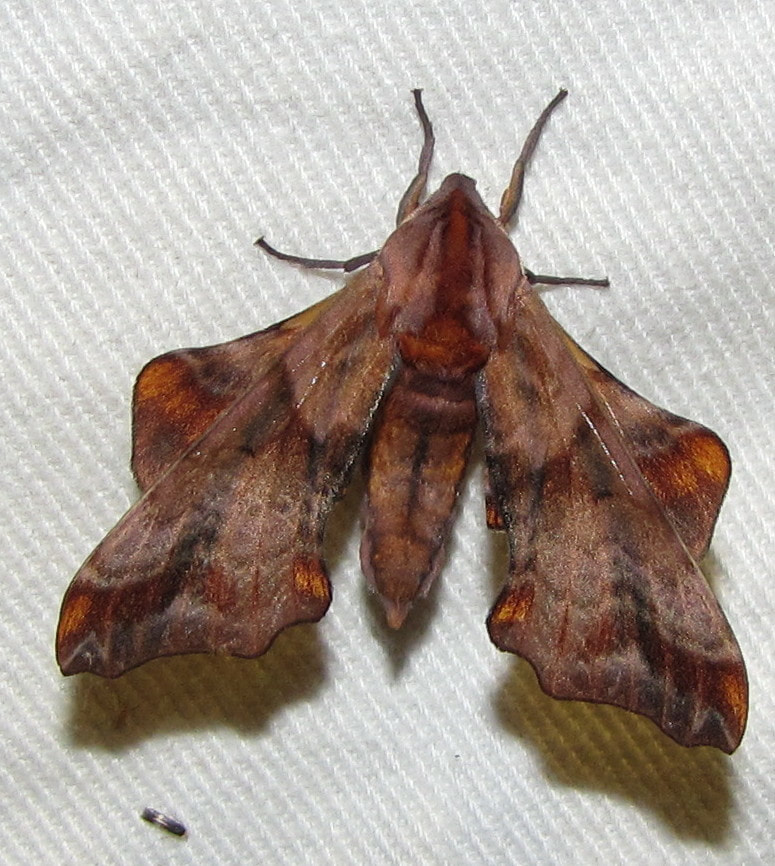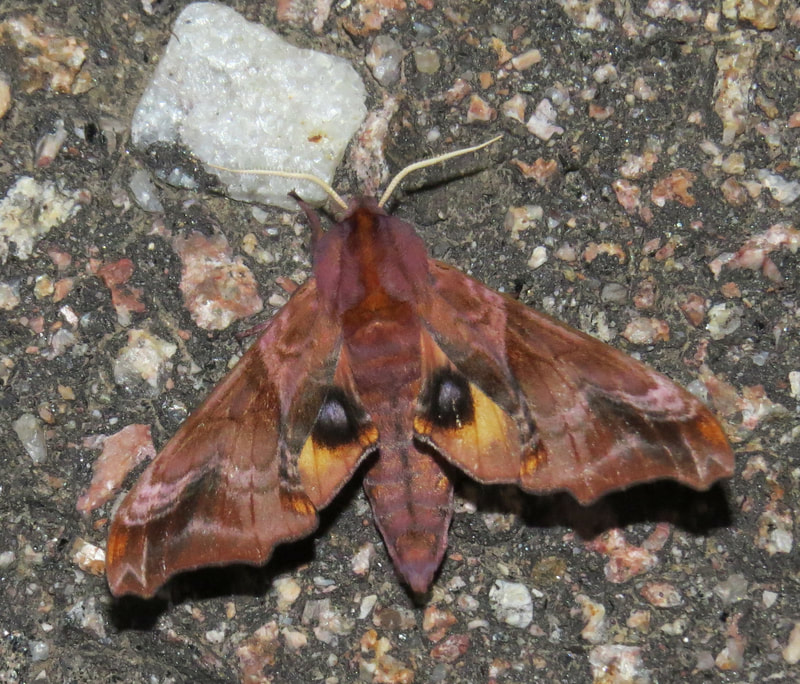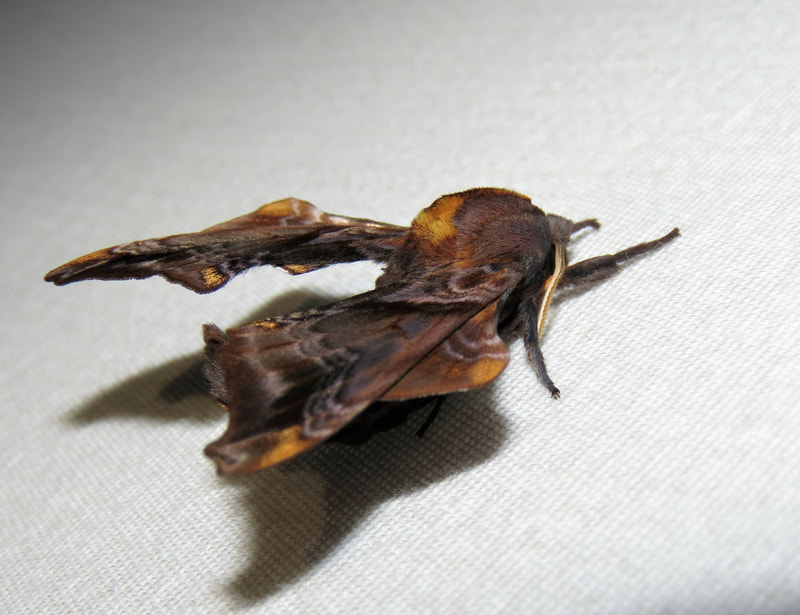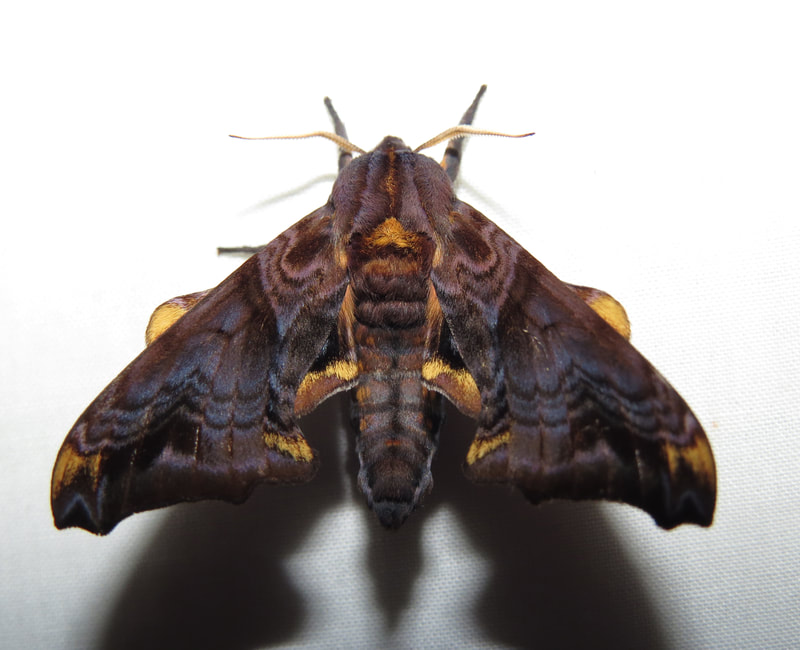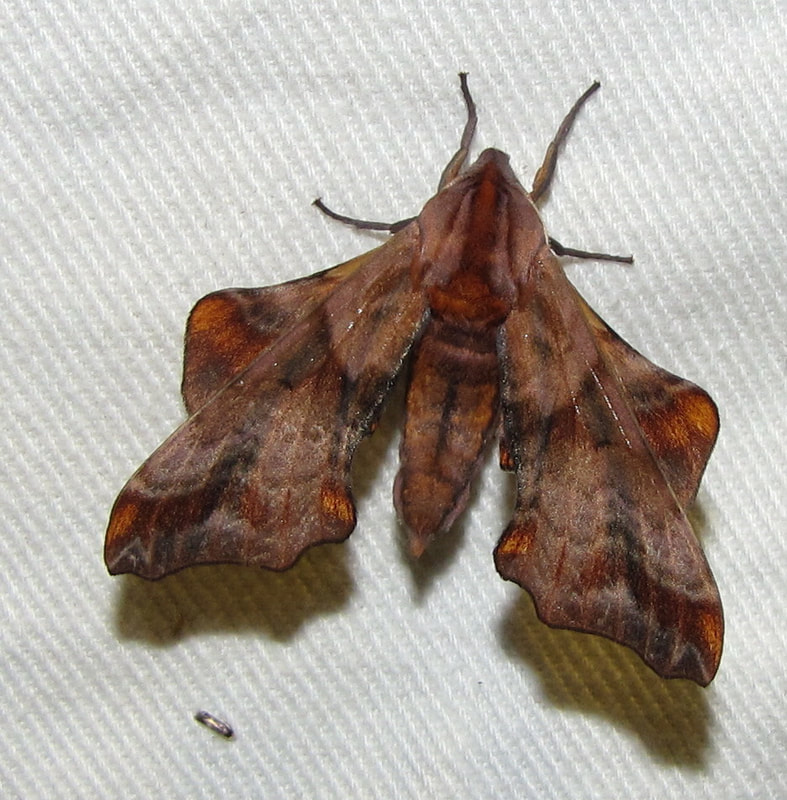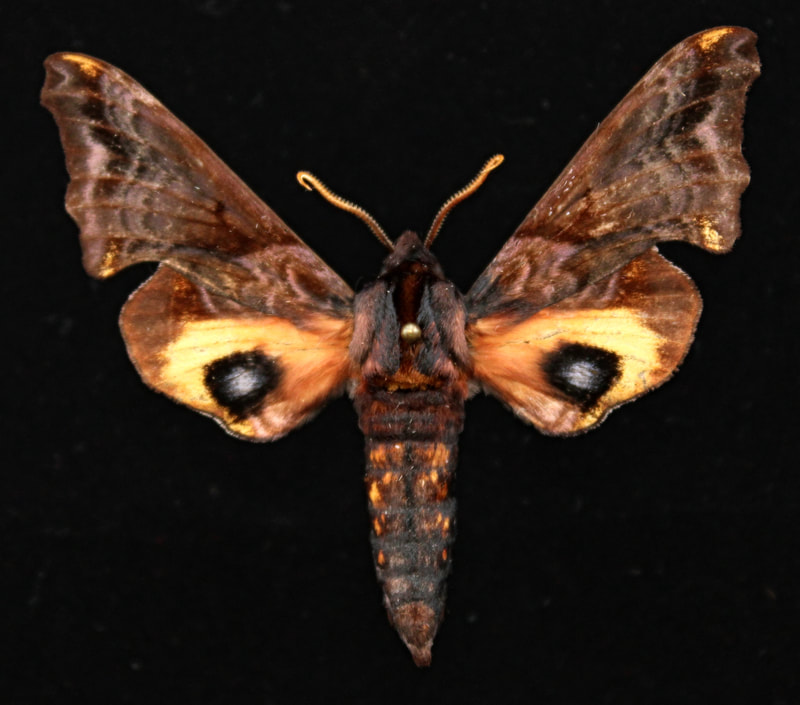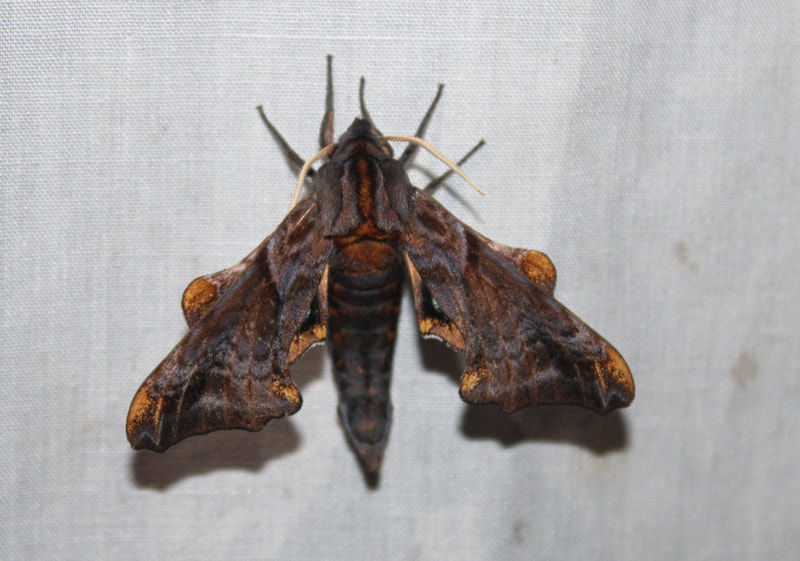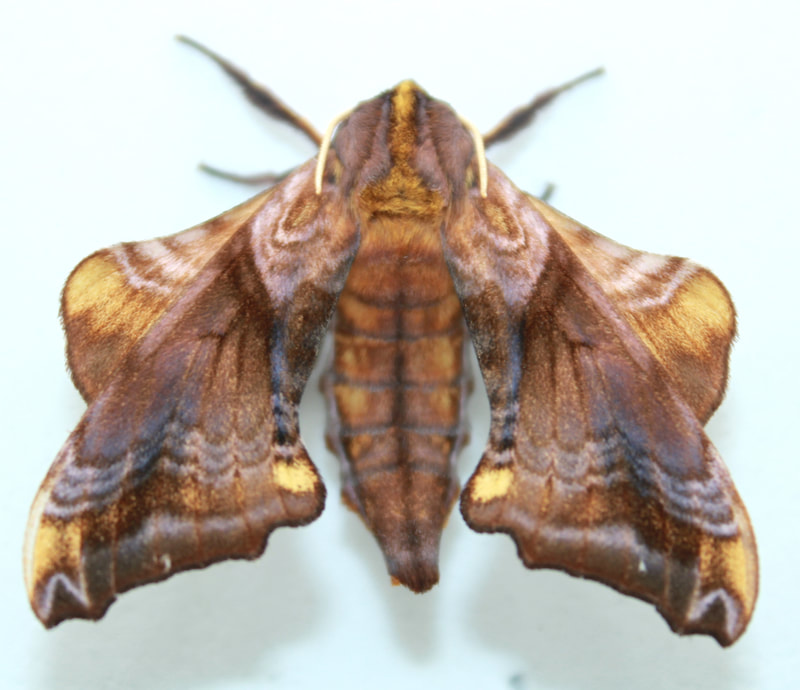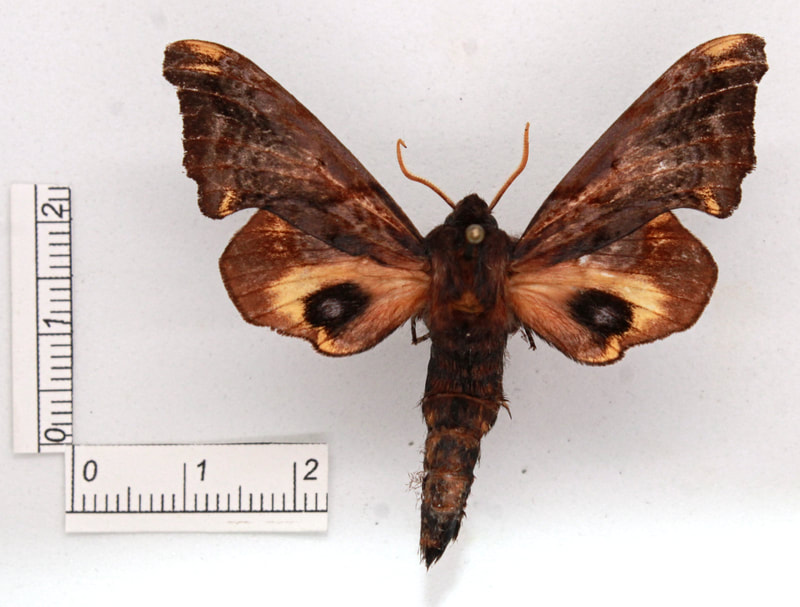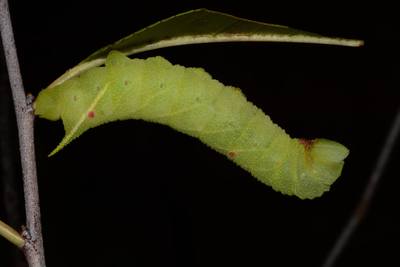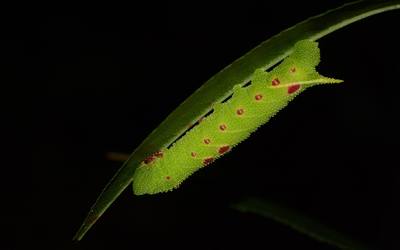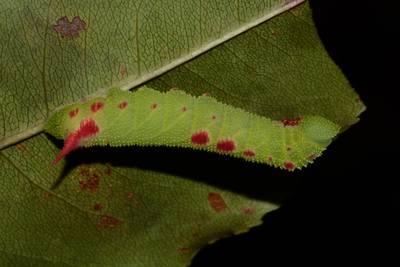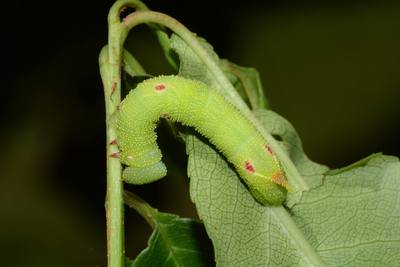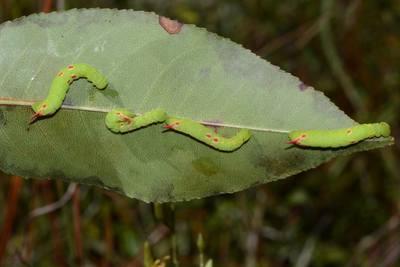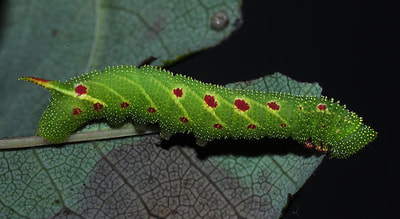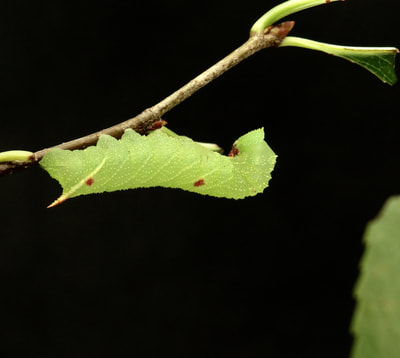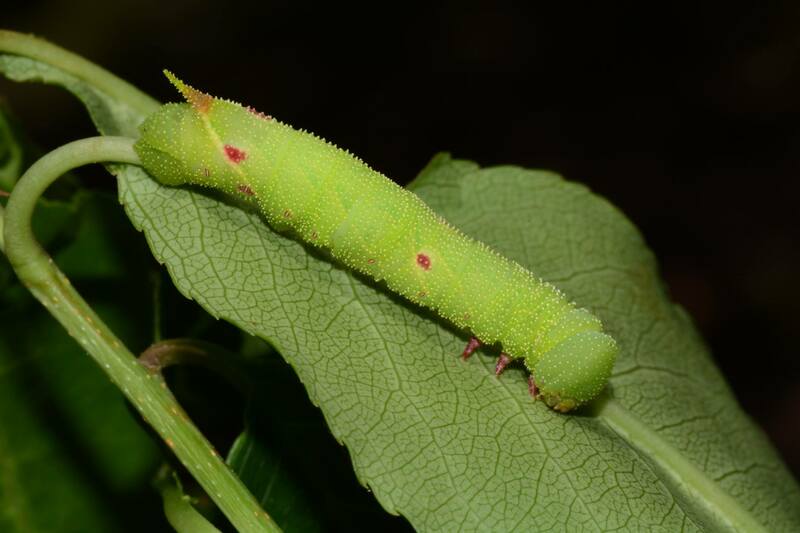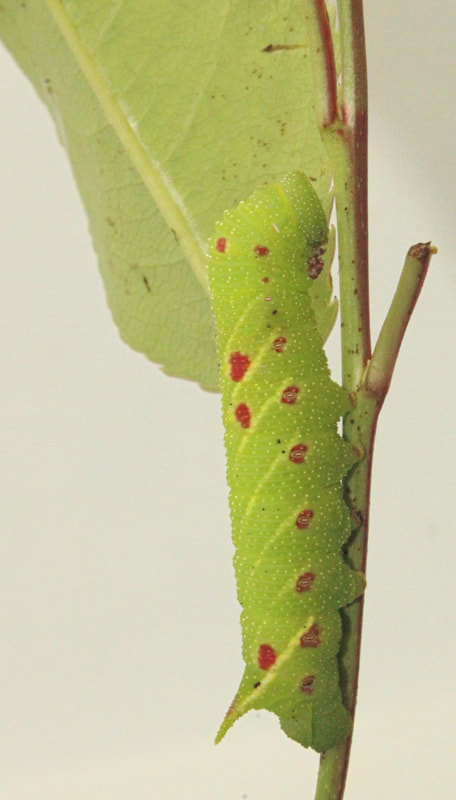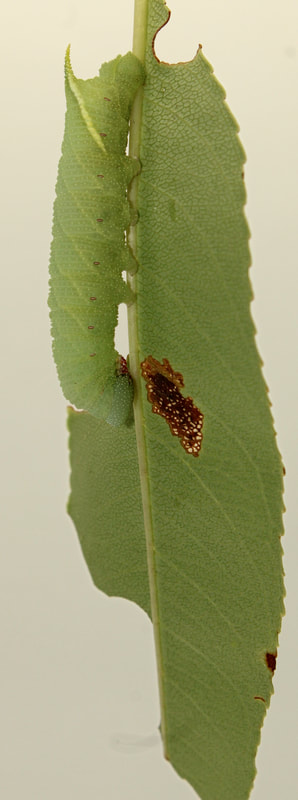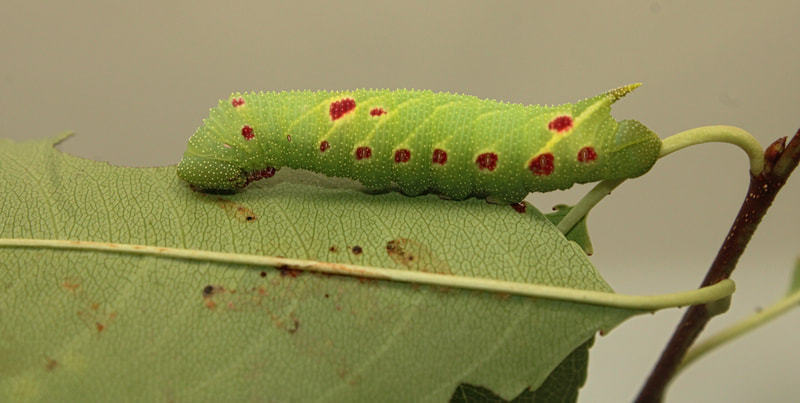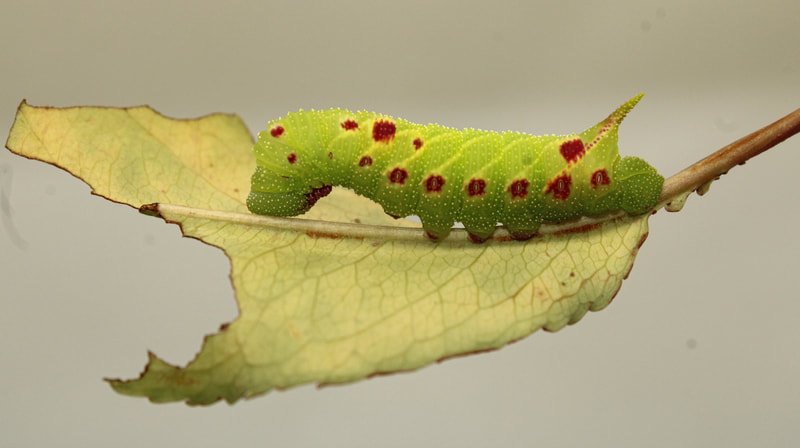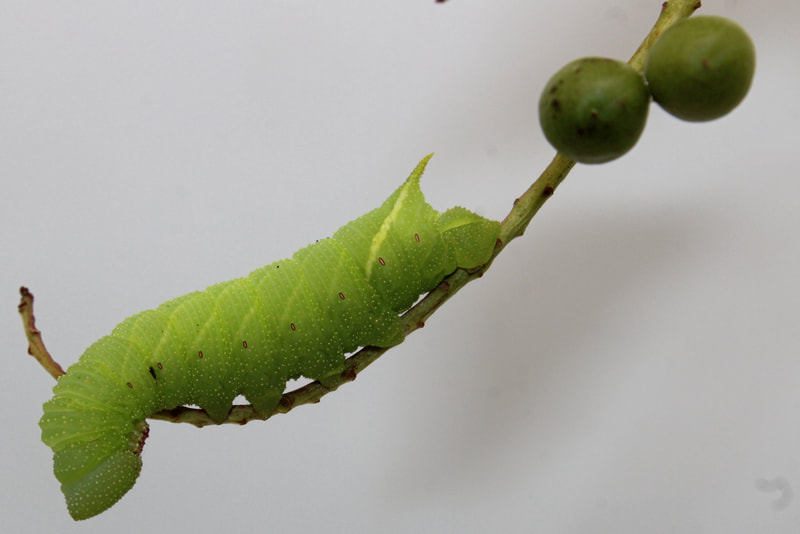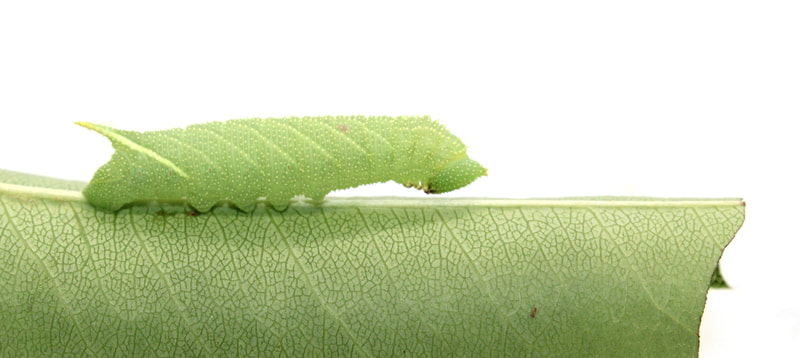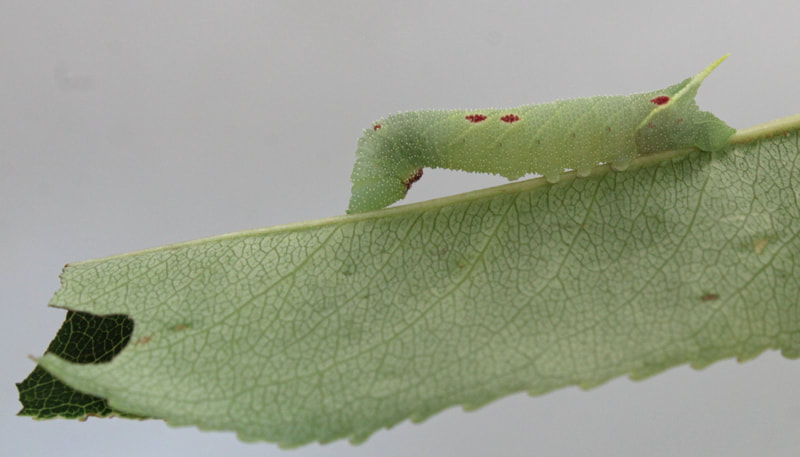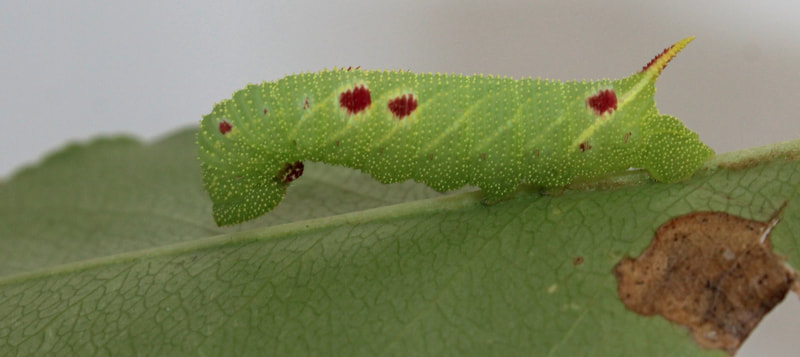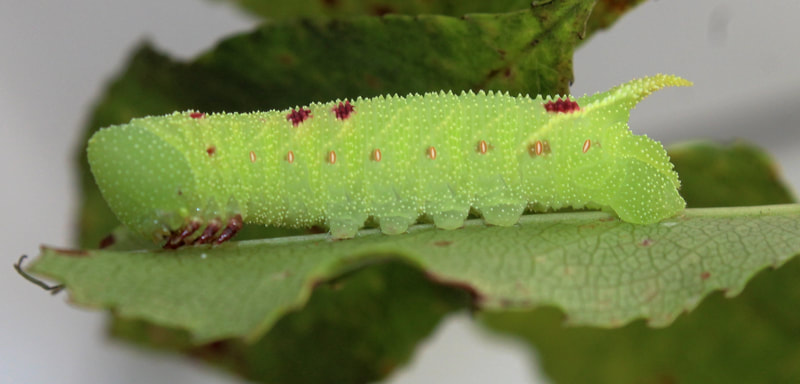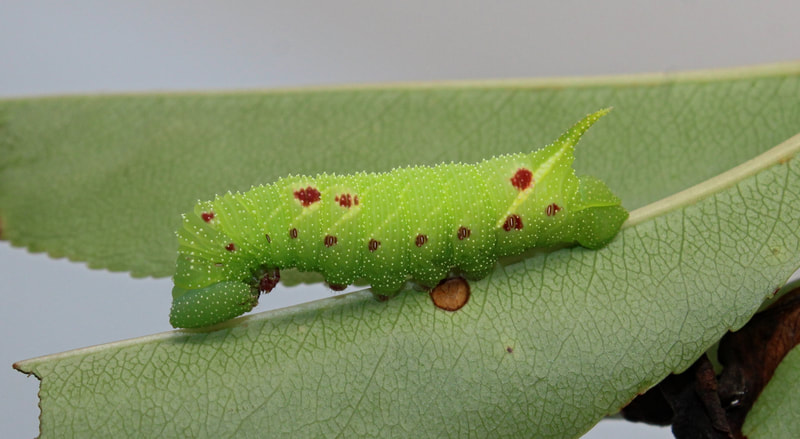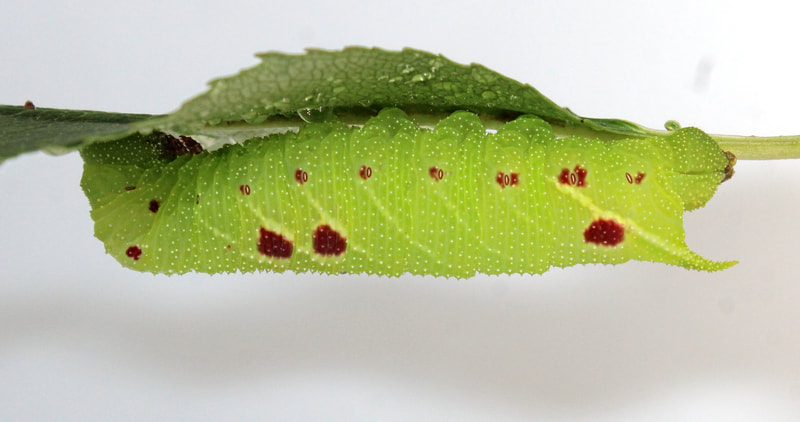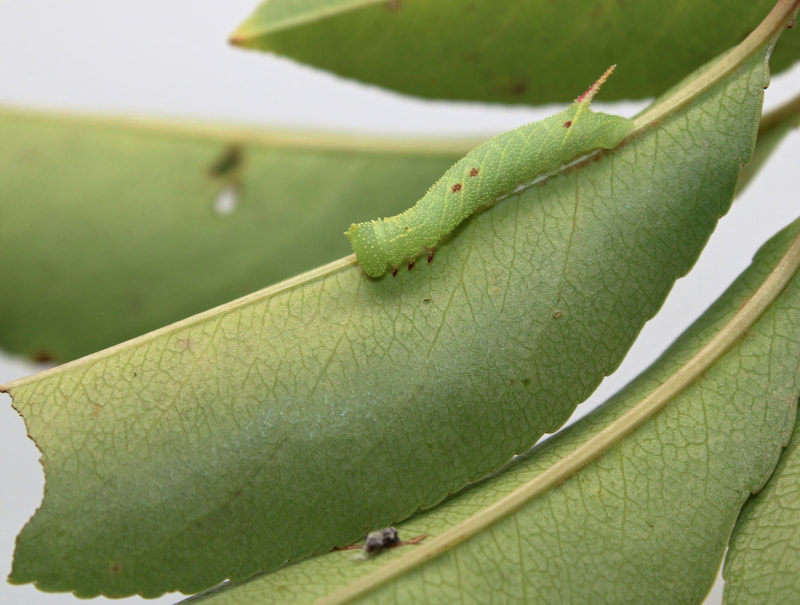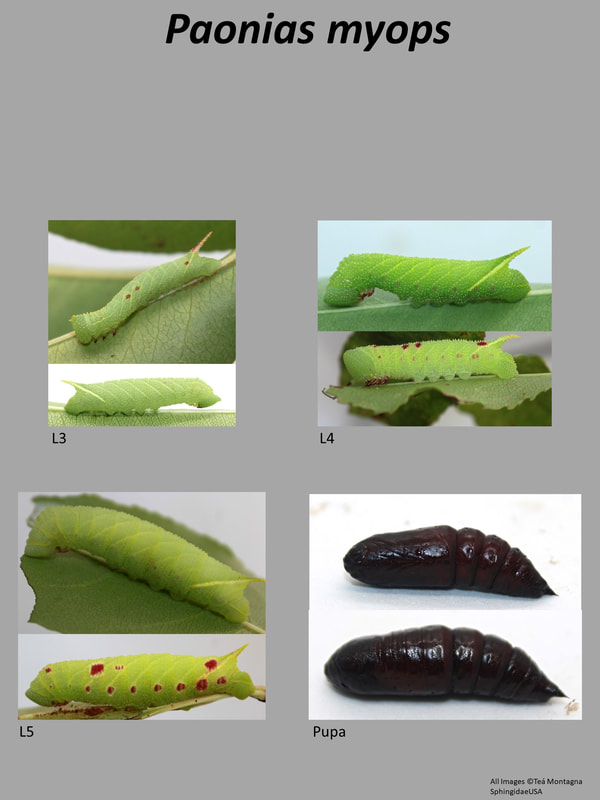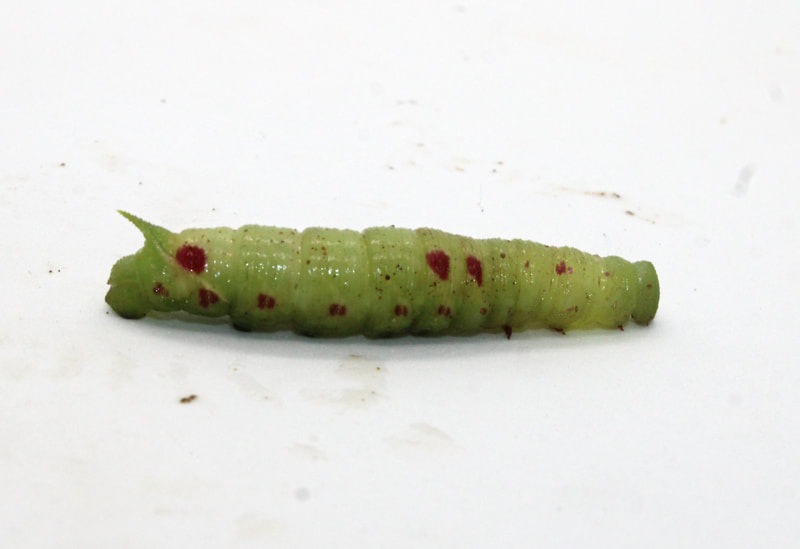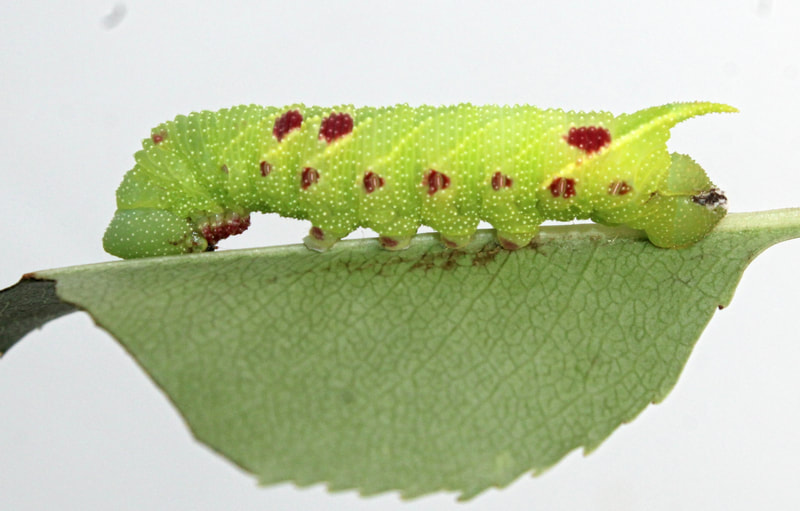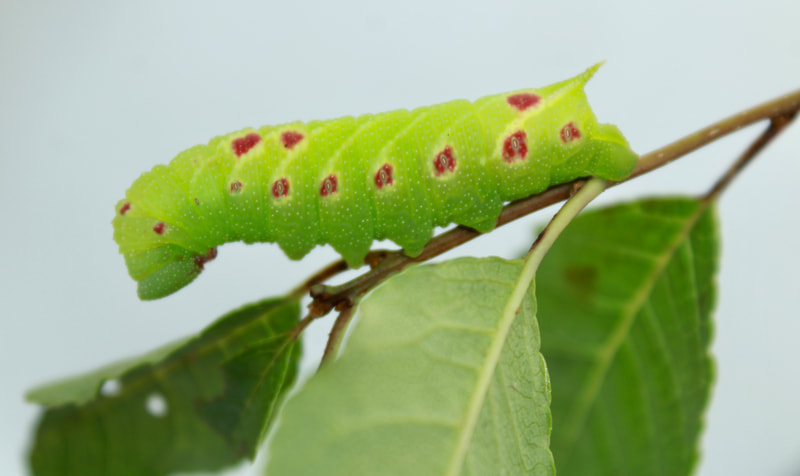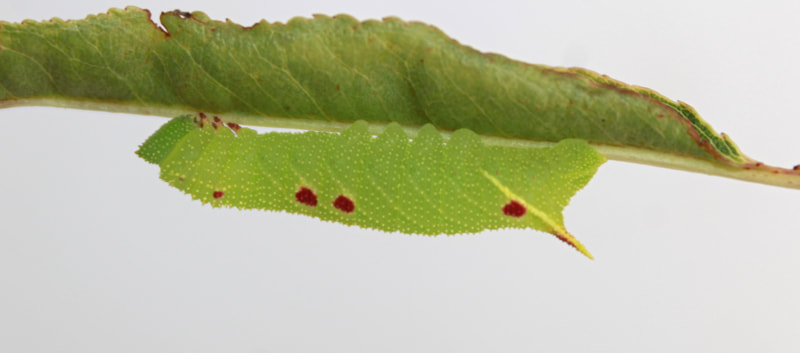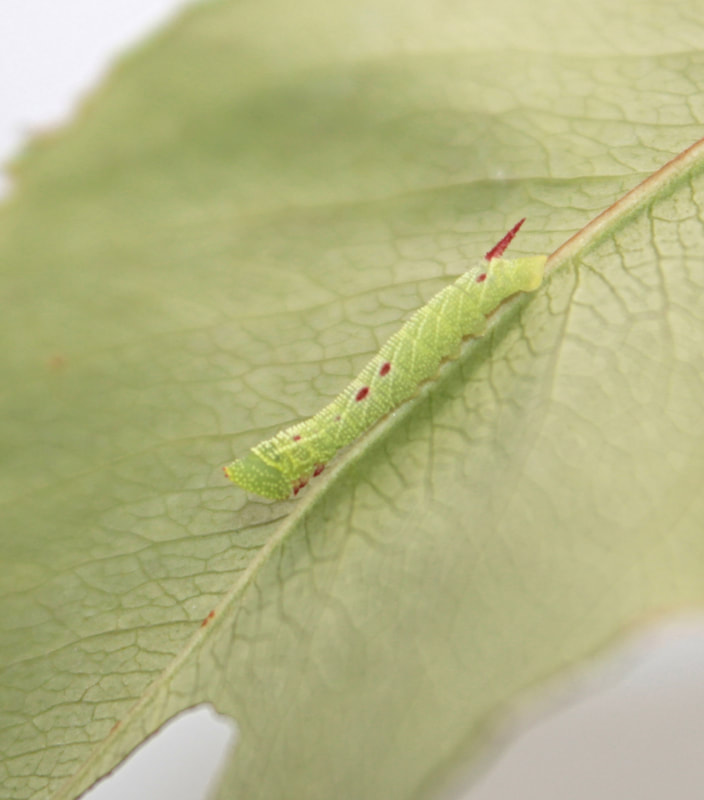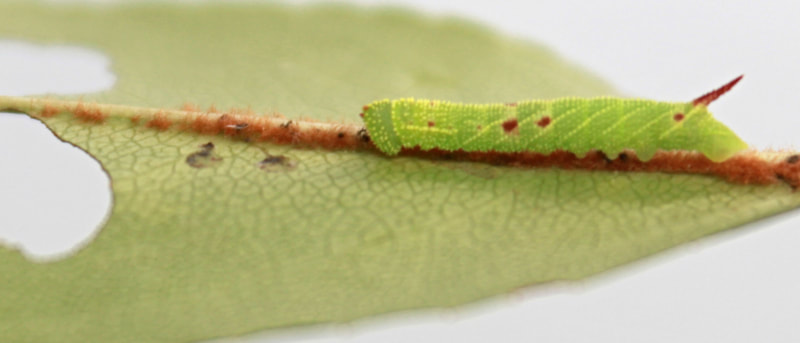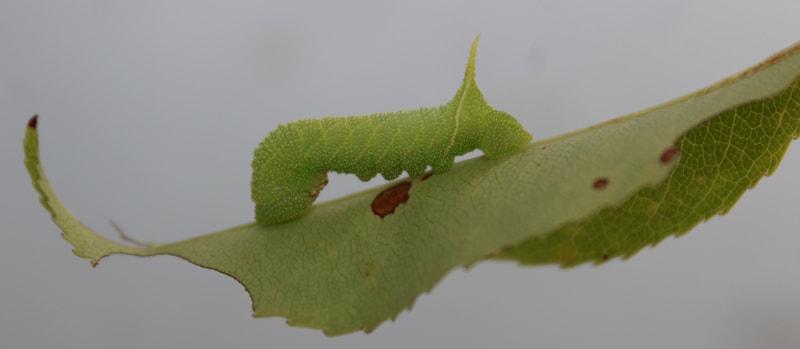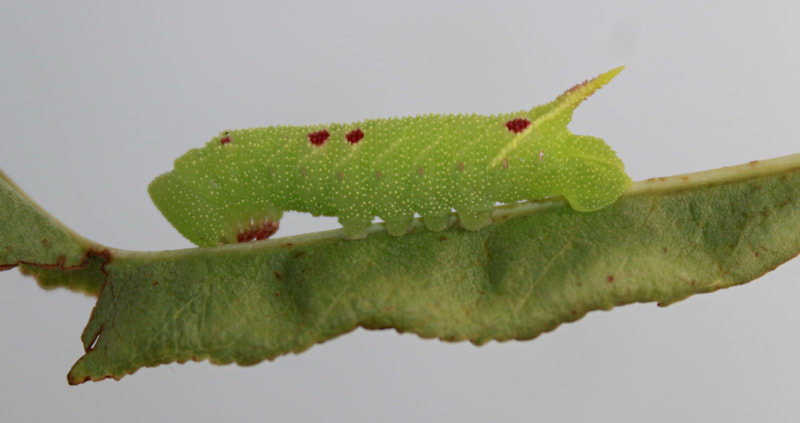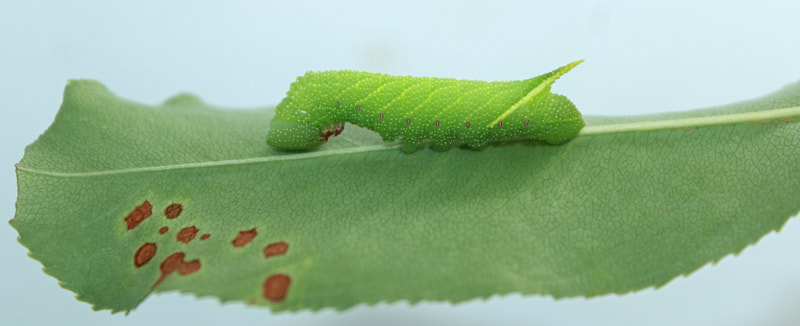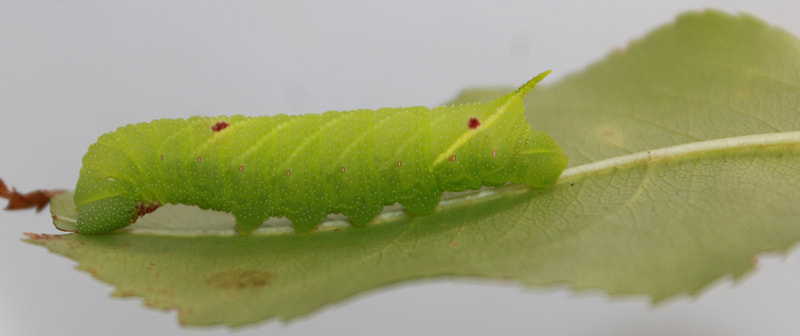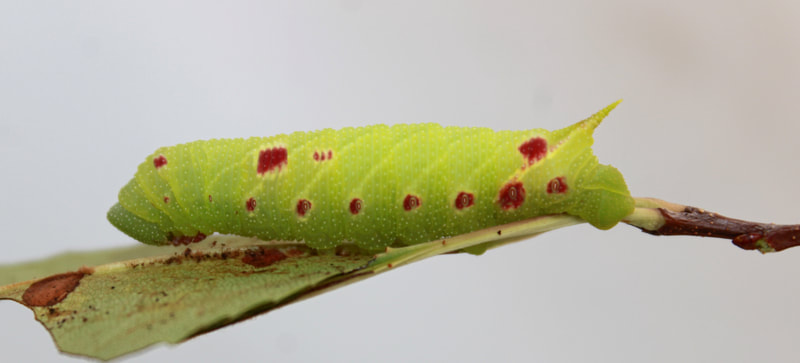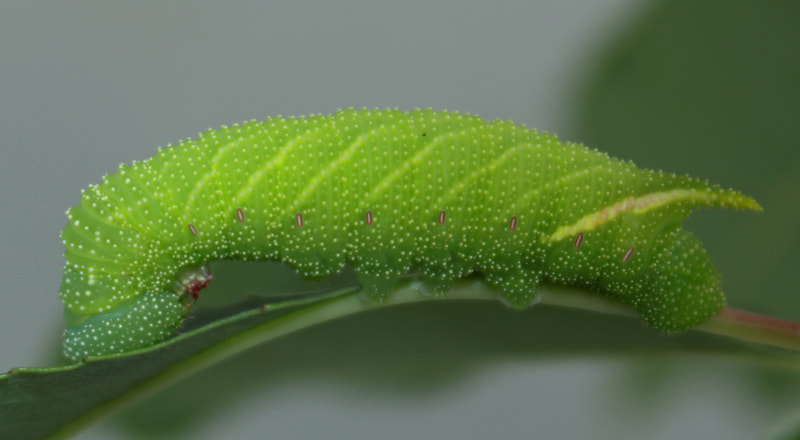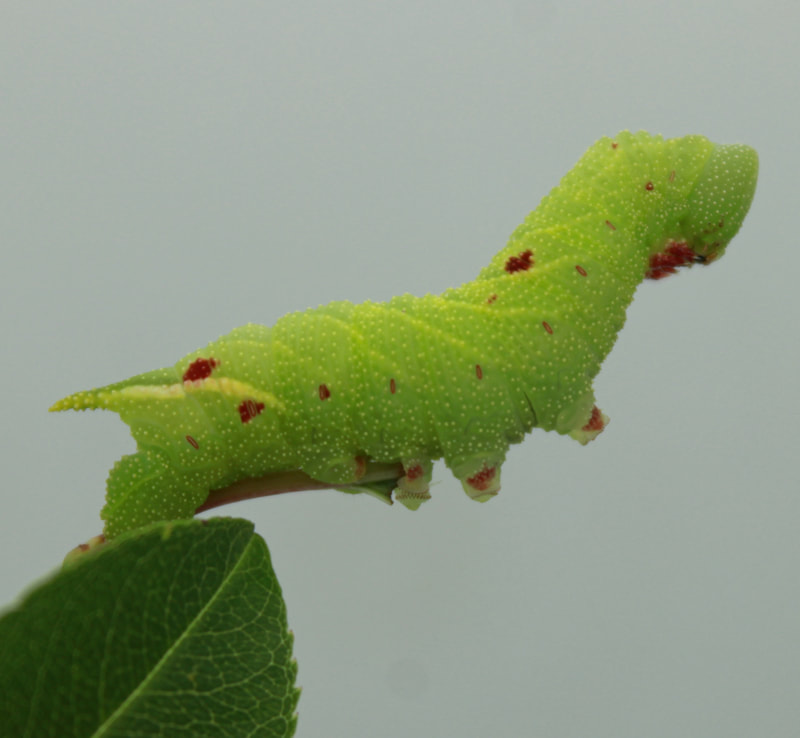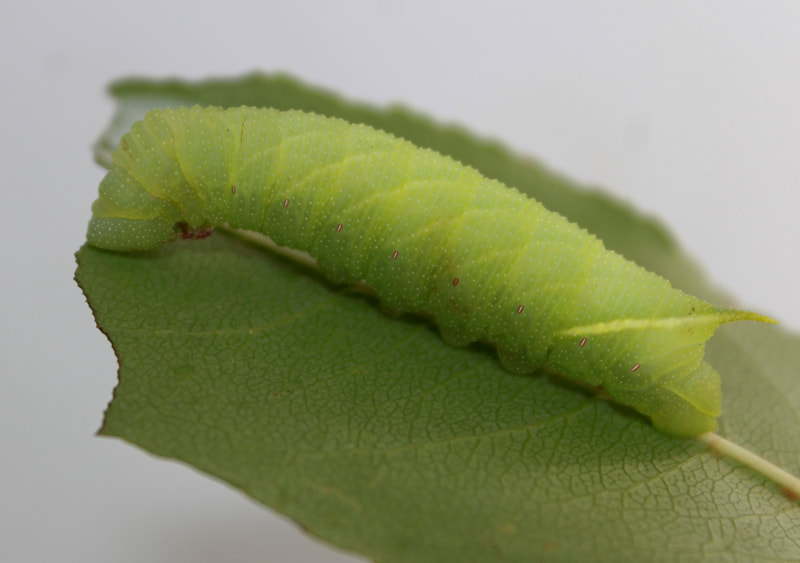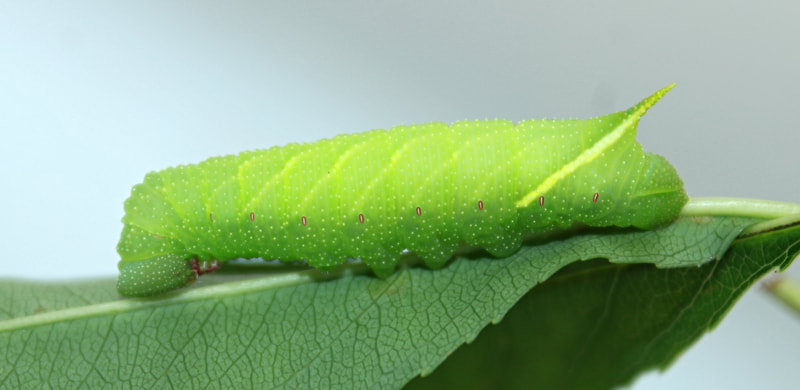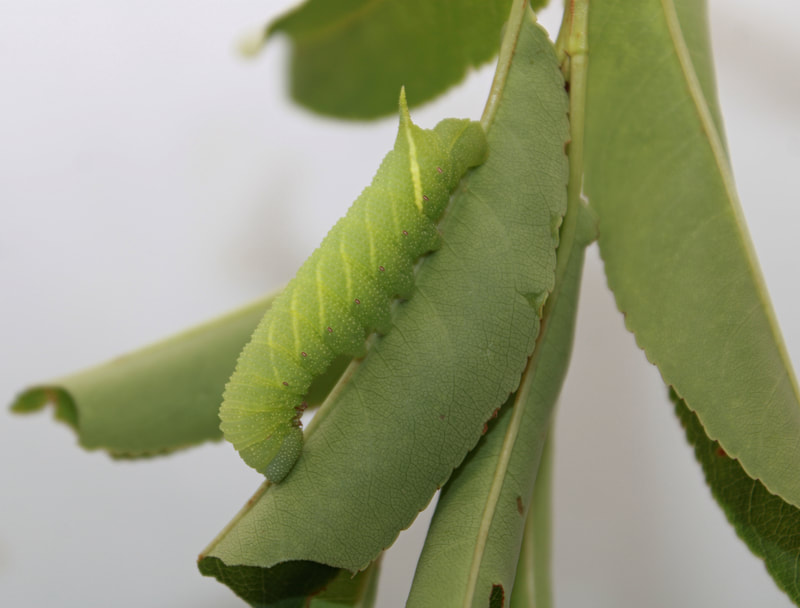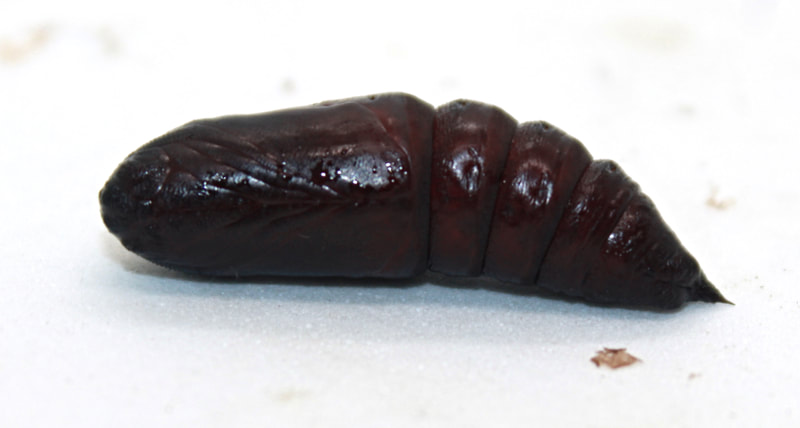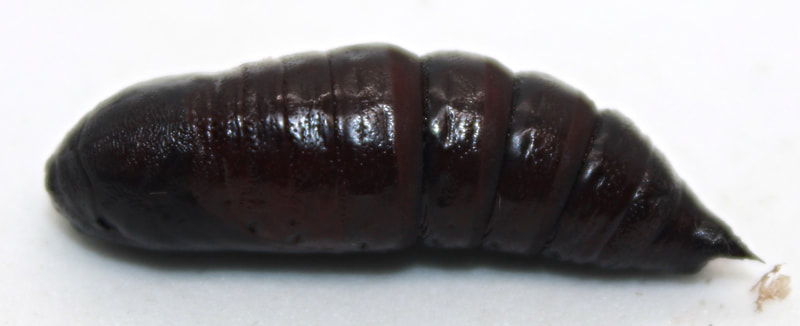|
Common names: Small-Eyed Sphinx
Ecology and Life History Overview: This moth can be found during the warmer months throughout its range. In the deep South, it does appear to fly year-round. Males and females of this species look identical, but differ in size slightly. Females tend to be a bit larger and heavier. Habitat and Searching for Larvae: You can find this species in quite a variety of habitats. It thrives on Prunus spp. which can be found in urban areas as well as rural and heavily forested. This species is often encountered in fields, edges, roadsides, and fencerows. Searching for larvae during the day can be tricky, but they fluoresce brightly under UV light. Rearing Notes: Another species that does well in captivity. You can keep the larvae in tubs as long as the humidity doesn’t get too high. They don’t seem to mind being slightly crowded, and rearing a dozen or so larvae in a medium sized tub seems to be fine. The larvae do thrive when placed in screen cages on cut hostplant, or when sleeved. Like other species, they rapidly grow when reared indoors. They will pupate readily using either the paper towel method or the moist dirt method. It is important not to let pupae dessicate. Adult Description: This moth is small (22-38mm forewing length) (2). The forewings of this moth are not scalloped like in Paonias excaecata but generally only have one or so lobes. The ground color of the wings is brown, usually a fairly dark brown. Some individuals have varying degrees of a bluish cast to the forewings. The hindwings are yellow with a blue fake eyespot enclosed in black. The way this moth sits is unique to the subfamily, and will help you narrow down your identification. If the hindwings are pulled up and are viewable from above the forewings, it’s likely a Smerinthinae. Larval Description: L5: This larva is incredibly variable. It is green in color and has a varying amount of red splotches, but can also be without those markings. The horn is granulose and green in color. There are 6 faint almost absent white diagonal streaks on the abdominal segments followed by a very bold 7th streak. The last leads to the horn on the back of the larva. Hostplants: Click here to load this Caspio Cloud Database
Cloud Database by Caspio |
The gallery to the left contains photos of Paonias myops adults. If you have a photo that you would like to submit to us, please contact us.
The gallery to the right contains photos of Paonias myops larval and pupal stages. If you have a photo that you would like to submit to us, please contact us.
The gallery to the right contains photos of Paonias myops larval and pupal stages. If you have a photo that you would like to submit to us, please contact us.
|
|
|
